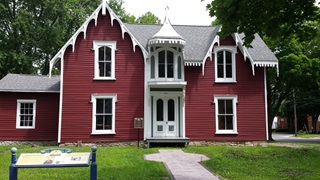Illinois communities 'embraced' Flanagan South project
Enbridge's Great Lakes to Gulf Coast series (Part 8)
Robert Huber is surrounded by 50,000 square feet of housewares, clothing, tools, automotive, hardware, plumbing, and sporting goods items – “a little bit of everything,” he says.
So, when 600 to 700 pipeliners move into town for a year, building a portion of Enbridge’s $2.8-billion Flanagan South pipeline, what do they buy off the shelves? You guessed it . . . a little bit of everything.
Actually, make that a lot of everything.
“It made a really big impact on the community,” says Huber, manager of the massive Farm King retail store in Macomb, Ill. “Our store had a record-setting month in November (2013), and that had a lot to do with the pipeliners.
“It was really, really busy. They bought winter clothes, winter boots . . . a lot of Christmas gifts, regular household items, and a lot of liquid propane that they used to heat their trailers in the winter. Nothing but a bunch of nice guys. They were wonderful,” adds Huber. “It was a big impact on the community. It wasn’t just our business that benefited from them.”
Kim Pierce can vouch for that. When the Enbridge contingent, which included representatives of trusted contractor Michels, moved into the area to work on Flanagan South, from spring 2013 through spring 2014, the economic multiplier effect took hold in Macomb, a “micropolitan” city of about 21,500 in west-central Illinois whose main economic drivers are agribusiness, health, and education.
The Flanagan South line, which went into service Dec. 2, now has the capacity to carry about 585,000 barrels of North American crude a distance of 593 miles from Pontiac, Ill., to Cushing, Okla.
“I’m still not sure how we pulled it all off, to be honest. We were facilitating all kinds of requests for accommodation . . . rental properties, space for trailers, even places with fenced-in yards for the workers who brought their dogs,” says Pierce, executive director of the Macomb Area Economic Development Corporation (MAEDCO). “And most of our retailers saw an uptick in sales – gas stations, hotels, restaurants, the big stores in town.
“We told our merchants: ‘You have an opportunity to go the extra mile here, stay open after hours, to accommodate this huge, short-term influx of economic development.’ We worked with dry cleaners and laundromats to offer a pickup service for laundry,” she adds. “Honestly, I hope that the Enbridge and Michels staff felt comfortable here, and got a proper sense of just how much the project was embraced around here.”
Together, the recent opening of Enbridge’s $2.8-billion Flanagan South pipeline and the twinning of the Seaway Pipeline represent North America’s first large-volume, full-path solution for safely and reliably delivering Western Canadian crude to the heavy-oil-hungry refining market in the Houston area.
The Flanagan South project used about 1,160 temporary workers throughout Illinois, with 40 to 50 per cent of those workers hired locally from union halls. Enbridge paid the state of Illinois $24.9-million in sales taxes during the life of the project, and will pay annual property taxes of $1.7-million to the state as a result of Flanagan South.
“It was a great opportunity for our small town, economically speaking,” says Brenda Stadsholt, mayor of Havana, Ill. “We loved having them here.”









